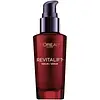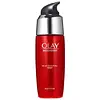What's inside
What's inside
 Key Ingredients
Key Ingredients

 Benefits
Benefits

 Concerns
Concerns

 Ingredients Side-by-side
Ingredients Side-by-side

Water
Skin ConditioningDipropylene Glycol
HumectantDimethicone
EmollientGlycerin
HumectantHydroxypropyl Tetrahydropyrantriol
Skin ConditioningPropylene Glycol
HumectantC12-15 Alkyl Benzoate
AntimicrobialAlcohol Denat.
AntimicrobialDimethicone/Vinyl Dimethicone Crosspolymer
Skin ConditioningPEG-100 Stearate
Stearic Acid
CleansingPotassium Cetyl Phosphate
EmulsifyingPotassium Hydroxide
BufferingCarbomer
Emulsion StabilisingGlyceryl Stearate
EmollientSilica
AbrasiveOleamide
2-Oleamido-1,3-Octadecanediol
Skin ConditioningPalmitic Acid
EmollientDisodium EDTA
Hydrolyzed Hyaluronic Acid
HumectantHydroxyethylcellulose
Emulsion StabilisingCapryloyl Salicylic Acid
ExfoliatingXanthan Gum
EmulsifyingCetyl Alcohol
EmollientOctyldodecanol
EmollientTocopheryl Acetate
AntioxidantPhenoxyethanol
PreservativeCI 15985
Cosmetic ColorantCI 19140
Cosmetic ColorantCI 77891
Cosmetic ColorantMica
Cosmetic ColorantLinalool
PerfumingLimonene
PerfumingCitronellol
PerfumingBenzyl Alcohol
PerfumingParfum
MaskingWater, Dipropylene Glycol, Dimethicone, Glycerin, Hydroxypropyl Tetrahydropyrantriol, Propylene Glycol, C12-15 Alkyl Benzoate, Alcohol Denat., Dimethicone/Vinyl Dimethicone Crosspolymer, PEG-100 Stearate, Stearic Acid, Potassium Cetyl Phosphate, Potassium Hydroxide, Carbomer, Glyceryl Stearate, Silica, Oleamide, 2-Oleamido-1,3-Octadecanediol, Palmitic Acid, Disodium EDTA, Hydrolyzed Hyaluronic Acid, Hydroxyethylcellulose, Capryloyl Salicylic Acid, Xanthan Gum, Cetyl Alcohol, Octyldodecanol, Tocopheryl Acetate, Phenoxyethanol, CI 15985, CI 19140, CI 77891, Mica, Linalool, Limonene, Citronellol, Benzyl Alcohol, Parfum
Water
Skin ConditioningCyclopentasiloxane
EmollientGlycerin
HumectantNiacinamide
SmoothingAluminum Starch Octenylsuccinate
AbsorbentDimethicone
EmollientDimethicone Crosspolymer
Emulsion StabilisingPolyethylene
AbrasivePanthenol
Skin ConditioningTocopheryl Acetate
AntioxidantPalmitoyl Pentapeptide-4
Skin ConditioningSodium PEG-7 Olive Oil Carboxylate
EmulsifyingCeratonia Siliqua Fruit Extract
MaskingPolyacrylamide
Titanium Dioxide
Cosmetic ColorantC13-14 Isoparaffin
EmollientCaprylyl Glycol
EmollientCeramide AP
Skin Conditioning1,2-Hexanediol
Skin ConditioningPhenoxyethanol
PreservativeLaureth-4
EmulsifyingLaureth-7
EmulsifyingDimethiconol
EmollientParfum
MaskingBHT
AntioxidantDisodium EDTA
Citric Acid
BufferingMica
Cosmetic ColorantWater, Cyclopentasiloxane, Glycerin, Niacinamide, Aluminum Starch Octenylsuccinate, Dimethicone, Dimethicone Crosspolymer, Polyethylene, Panthenol, Tocopheryl Acetate, Palmitoyl Pentapeptide-4, Sodium PEG-7 Olive Oil Carboxylate, Ceratonia Siliqua Fruit Extract, Polyacrylamide, Titanium Dioxide, C13-14 Isoparaffin, Caprylyl Glycol, Ceramide AP, 1,2-Hexanediol, Phenoxyethanol, Laureth-4, Laureth-7, Dimethiconol, Parfum, BHT, Disodium EDTA, Citric Acid, Mica
 Reviews
Reviews

Ingredients Explained
These ingredients are found in both products.
Ingredients higher up in an ingredient list are typically present in a larger amount.
Dimethicone is a type of synthetic silicone created from natural materials such as quartz.
What it does:
Dimethicone comes in different viscosities:
Depending on the viscosity, dimethicone has different properties.
Ingredients lists don't always show which type is used, so we recommend reaching out to the brand if you have questions about the viscosity.
This ingredient is unlikely to cause irritation because it does not get absorbed into skin. However, people with silicone allergies should be careful about using this ingredient.
Note: Dimethicone may contribute to pilling. This is because it is not oil or water soluble, so pilling may occur when layered with products. When mixed with heavy oils in a formula, the outcome is also quite greasy.
Learn more about DimethiconeDisodium EDTA plays a role in making products more stable by aiding other preservatives.
It is a chelating agent, meaning it neutralizes metal ions that may be found in a product.
Disodium EDTA is a salt of edetic acid and is found to be safe in cosmetic ingredients.
Learn more about Disodium EDTAGlycerin is already naturally found in your skin. It helps moisturize and protect your skin.
A study from 2016 found glycerin to be more effective as a humectant than AHAs and hyaluronic acid.
As a humectant, it helps the skin stay hydrated by pulling moisture to your skin. The low molecular weight of glycerin allows it to pull moisture into the deeper layers of your skin.
Hydrated skin improves your skin barrier; Your skin barrier helps protect against irritants and bacteria.
Glycerin has also been found to have antimicrobial and antiviral properties. Due to these properties, glycerin is often used in wound and burn treatments.
In cosmetics, glycerin is usually derived from plants such as soybean or palm. However, it can also be sourced from animals, such as tallow or animal fat.
This ingredient is organic, colorless, odorless, and non-toxic.
Glycerin is the name for this ingredient in American English. British English uses Glycerol/Glycerine.
Learn more about GlycerinMica is a naturally occurring mineral used to add shimmer and color in cosmetics. It can also help improve the texture of a product or give it an opaque, white/silver color.
Serecite is the name for very fine but ragged grains of mica.
This ingredient is often coated with metal oxides like titanium dioxide. Trace amounts of heavy metals may be found in mica, but these metals are not harmful in our personal products.
Mica has been used since prehistoric times throughout the world. Ancient Egyptian, Indian, Greek, Roman, Aztec, and Chinese civilizations have used mica.
Learn more about MicaParfum is a catch-all term for an ingredient or more that is used to give a scent to products.
Also called "fragrance", this ingredient can be a blend of hundreds of chemicals or plant oils. This means every product with "fragrance" or "parfum" in the ingredients list is a different mixture.
For instance, Habanolide is a proprietary trade name for a specific aroma chemical. When used as a fragrance ingredient in cosmetics, most aroma chemicals fall under the broad labeling category of “FRAGRANCE” or “PARFUM” according to EU and US regulations.
The term 'parfum' or 'fragrance' is not regulated in many countries. In many cases, it is up to the brand to define this term.
For instance, many brands choose to label themselves as "fragrance-free" because they are not using synthetic fragrances. However, their products may still contain ingredients such as essential oils that are considered a fragrance by INCI standards.
One example is Calendula flower extract. Calendula is an essential oil that still imparts a scent or 'fragrance'.
Depending on the blend, the ingredients in the mixture can cause allergies and sensitivities on the skin. Some ingredients that are known EU allergens include linalool and citronellol.
Parfum can also be used to mask or cover an unpleasant scent.
The bottom line is: not all fragrances/parfum/ingredients are created equally. If you are worried about fragrances, we recommend taking a closer look at an ingredient. And of course, we always recommend speaking with a professional.
Learn more about ParfumPhenoxyethanol is a preservative that has germicide, antimicrobial, and aromatic properties. Studies show that phenoxyethanol can prevent microbial growth. By itself, it has a scent that is similar to that of a rose.
It's often used in formulations along with Caprylyl Glycol to preserve the shelf life of products.
Tocopheryl Acetate is AKA Vitamin E. It is an antioxidant and protects your skin from free radicals. Free radicals damage the skin by breaking down collagen.
One study found using Tocopheryl Acetate with Vitamin C decreased the number of sunburned cells.
Tocopheryl Acetate is commonly found in both skincare and dietary supplements.
Learn more about Tocopheryl AcetateWater. It's the most common cosmetic ingredient of all. You'll usually see it at the top of ingredient lists, meaning that it makes up the largest part of the product.
So why is it so popular? Water most often acts as a solvent - this means that it helps dissolve other ingredients into the formulation.
You'll also recognize water as that liquid we all need to stay alive. If you see this, drink a glass of water. Stay hydrated!
Learn more about Water